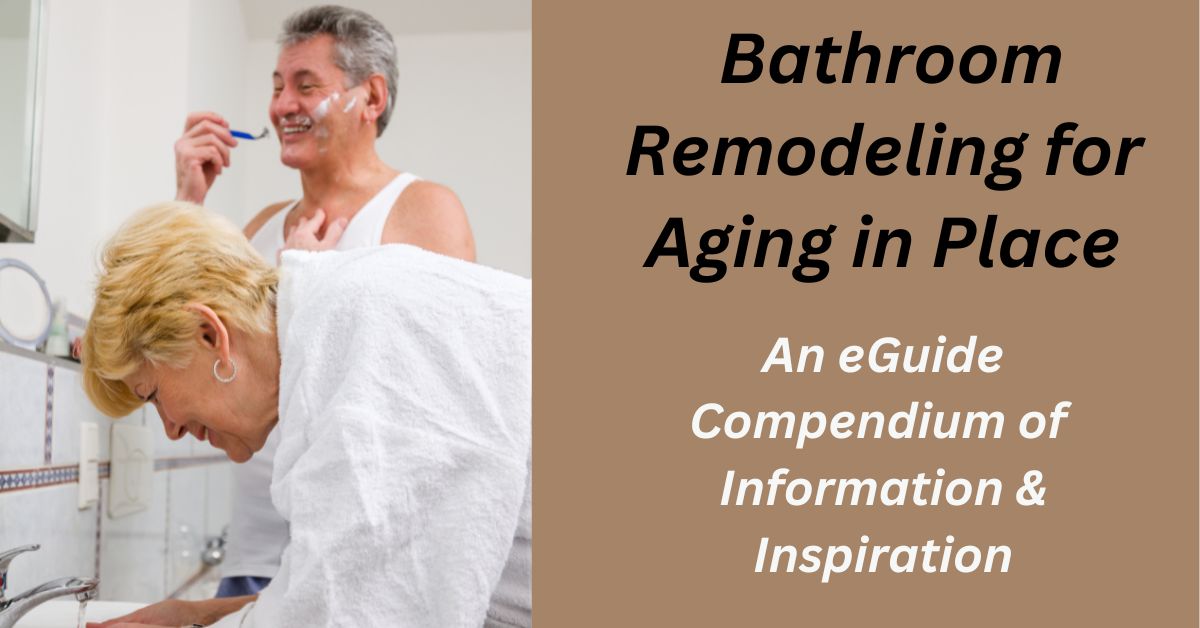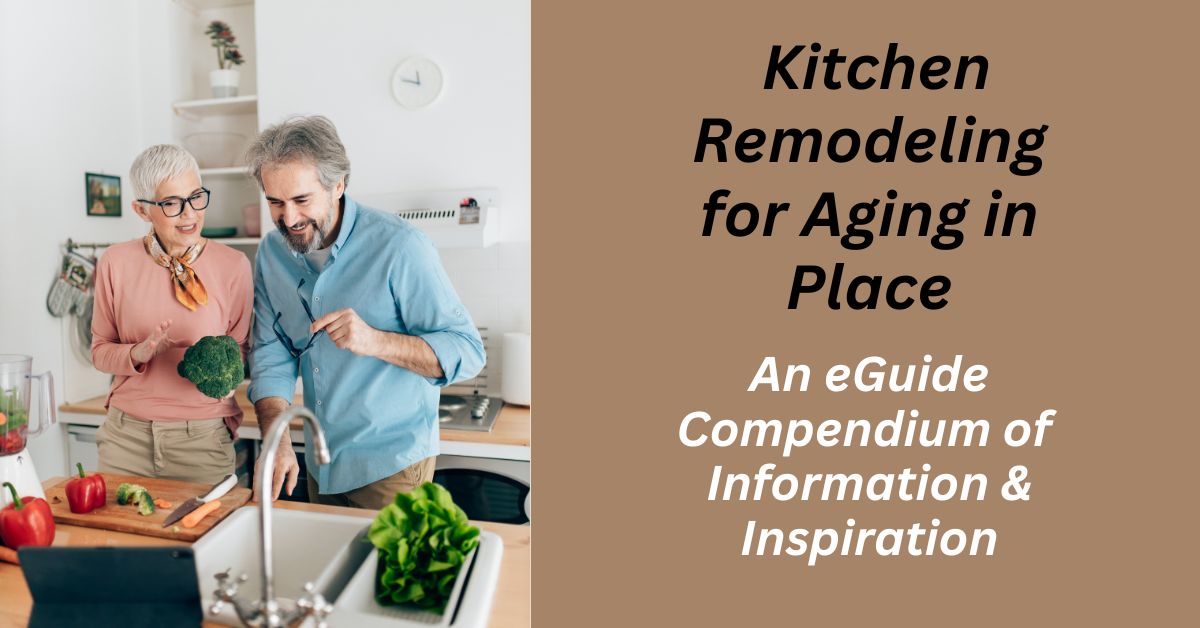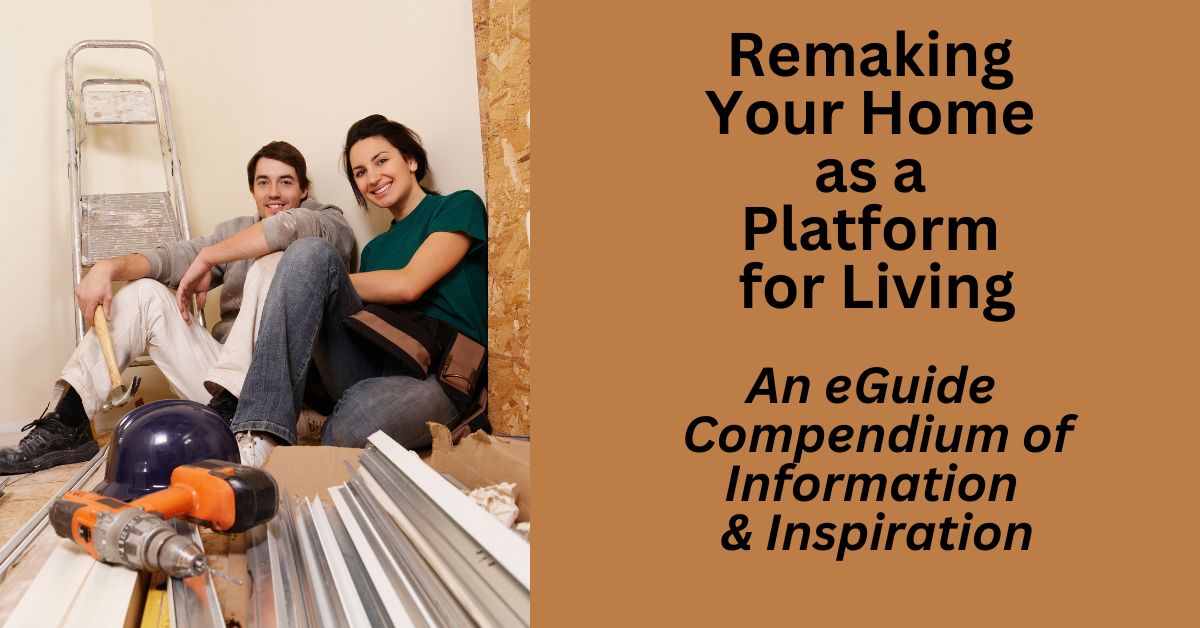Table of Contents
Note: If you came to this post on Universal Design (UD) through a random search, please click on this parent page and our home page for more context.
Introduction
Many people have never heard of UD. If they have, they take it to be the same as design for aging in place. And there is a lot of truth in that. But, in fact, UD principles have broader applications. And they make sense for any building or remodeling project.
Myths Surrounding Universal Design
But let’s not get hung up by “science” and dispel some myths surrounding Universal Design.
Myth #1: Universal Design is just about old people and aging
NOT SO: Universal Design is not just the same as designing for aging in place. It has a wider application.
UD benefits a population of all ages, abilities, and disabilities. It encourages intuitively usable goods and accessible living environments and services. So, when we apply it to the housing stock, it is much more than just remodeling for seniors. It is all about making a home as comfortable and usable as possible for everyone living there.
UD means building what works for everybody. This includes every able-body and every disabled body.
That said, aging in place is nonetheless an important subset of Universal Design. And in this, we admit to treating it as pretty much the same thing, when it comes to remodeling. In fact, in our opinion, remodeling for aging in place is a great example of Universal Design in practice.
- Related post: Aging in Place
- Further reading on Amazon: Universal Methods of Design
test
Myth #2: Universal Design means an ugly or clunky end result that will hurt my home’s value
NOT SO: No product designed with only function in mind can be attractive.
The aesthetics of Universal Design are as important as any other aspect. The appearance of any product can make it more usable. An attractive product naturally invites use. Products in the home are no exception.
Manufacturers of grab bars, handrails, plumbing fixtures, etc use Universal Design principles. And creative finishes on them enhance the beauty of both the product and the home. They also conceal the existence of the Universal Design below the surface.
Making the home beautiful and also welcoming to people of all ages and abilities makes it more valuable. This is because it now appeals to a broader market than it did before.
So UD in remodeling results in both enhanced accessibility and enhanced value.
Myth #3: Universal Design is all about Accessible Design and the ADA
NOT SO: “Accessible Design” is a legalistic term associated with the ADA (Americans with Disabilities Act). This regulates public accommodations. ADA does not apply to private homes.
Yet, UD is certainly all about “accessibility” as a general concept. “Accessibility” is an umbrella term and, unfortunately, has become jargon. It includes all aspects of a person’s ability to function within a built environment or take part in an activity.
So UD is a flexible approach to the living environment at large. It considers the needs of everyone regardless of size, age, ability, or disability. It does not follow a set of government-ordered specifications.
As applied to a home remodel, UD enhances the comfort and convenience of everyone living there. It takes into account every stage of human development in every physical condition.
Myth #4: Universal Design will make my remodel more expensive
NOT SO: Incorporating UD will not necessarily increase the cost. It is true that some universally designed products may be more expensive than others. An example would be a hands-free plumbing fixture. But the overall cost effect will be negligible. And any extra cost can be offset by savings in other finishes elsewhere.
Myth #5: Contractors do not understand Universal Design
NOT NECESSARILY SO: In the context of remodeling, UD is common sense at work. And most contractors have plenty of common sense. They just need to be aware of any specific needs of their customers.
Besides, more and more contractors are getting an aging in place certification. This is through the National Association of Home Builders. Ask your prospective contractors about this. Besides, UD is not rocket science. It is just a methodical approach to planning living space.
In the guides and checklists in this Guide, you already have access to all the practical basics of remodeling. Apply these and you will end up with a “universally designed” end result. Or close to it.
And, with the knowledge you have gained here, you will be able to push your contractor in the right direction. Plus, this Guide will take you to the right kind of products to include in a “universally designed”project.
- Related post: Interior Design Overview
- Related Post: Kitchen Remodel Overview
- Related Post: Bathroom Remodel Overview
So, having dispelled some myths, let’s dig a bit further into Universal Design.
The Roots of Universal Design
In the US, the concept of UD arose out of the confluence of:
1) social movements of the last century;
2) developments in assistive technology for people with special needs;
3) developments in the field of ergonomics and design.
Parallel thought and work in Europe resulted in “Design for All.” This is essentially the same thing as UD.
In 1997 researchers at North Carolina State University laid out the Seven Principles of Universal Design. In summary, these are:
- Equitable Use: The design should appeal and be useful to users of any age or physical ability.
- Flexibility in Use: The design should suit and be adaptable to all preferences and abilities.
- Simple and Intuitive Use: The design should be easy to understand and use by everyone.
- Perceptible Information: People with sensory issues should understand the design easily, and “legibly.”
- Tolerance for Error: The design should be “user-friendly.” It should minimize exposure to hazards and accidents from unintended misuse.
- Low Physical Effort: The design should be usable with minimum operating force or bodily contortion.
- Size and Space for Approach and Use: The design should permit easy reach for a person who is seated or standing. This is regardless of body size and mobility. It should allow for the use of assistive equipment or persons.
A Holistic Approach to Remodeling
These principles of UD are interwoven and closely related to each other. This becomes clear when we start to put them into practice.
When we apply these principles to the field of building and remodeling, we start to see a clearer picture of how it works.
Until recently, the design, development, and marketing of homes and their remodeling had a single market. This was the young, able-bodied adult.
But, with UD, remodeling design takes a multi-generational approach. It now addresses life’s continuum. It considers a household that encompasses all ages. This includes toddlers and great-grandmothers, all sharing the same space. It also considers household members who may have other physical limitations.
Universal Design is Smart Design
- It is a smart, modern design because it designs for all.
- It is a smart investment because it appeals to your future buyers. They have the same concerns. And they will appreciate knowing that you have already addressed these concerns in the home they are considering.
- It is also smart insurance against a possible future disability, on the one hand, and the certainty of growing old on the other.
So how do we get smart about it? It is really pretty simple, as seen below.
Universal Design Mindset
Our various checklists deal with most issues. But here are concrete examples of how to think through UD and a kitchen or bathroom remodel.
Look at each component of the kitchen or bathroom and ask questions like, “How will Granny sit at the counter when she is preparing food? And where will the kids sit to do their homework?” Always think of people growing up and growing old.
It’s easy to see that, when we look at it in those terms, UD really isn’t such a mysterious idea after all.
Features and Devices Incorporating Universal Design
Here are some concrete examples of UD in action. They will further dispel the myths we discussed earlier.
- Hands-free plumbing fixtures
- Counters and sinks you can raise and lower
- Movable kitchen island on lockable casters
- Comfort height counters
- Adjustable counters
- Accessible appliances. Consider drawer dishwashers on either side of the sink. These are much easier to use than the standard drop-front dishwasher.
- Taking maximum advantage of the “easy reach zone” (18” to 48’ from the floor)
- A multitasking convection/microwave at shoulder height
- French door ovens to avoid stooping for the awkward dropdown front oven
Universal Design and Aging in Place
The pressure of demographics makes aging in place the most important subset of Universal Design. It actually dominates the field. It is providing the impetus for UD advances made in the area of home remodeling.
The 2016 Population Reference Bureau estimates the number of Americans 65 and older will more than double from 46 million to 98 million by 2060. This is due to advances in medicine and improvements in diet and lifestyle.
It is also an indicator of the huge amount of work to be done to the existing housing stock. This is for seniors to live out their lives comfortably at home rather than in institutions.
Conclusion and final thoughts ?
We subscribe to the noble overall goals of Universal Design in creating accessible spaces for all people. And we realize the importance of the trickle-down effect of aging in place in promoting those goals.
So for us and our own efforts, we gladly admit to treating Universal Design and Remodeling for aging in place as pretty much synonymous.
Further reading on Amazon: The Accessible Home: Designing for All Ages and Abilities





Leave a Reply